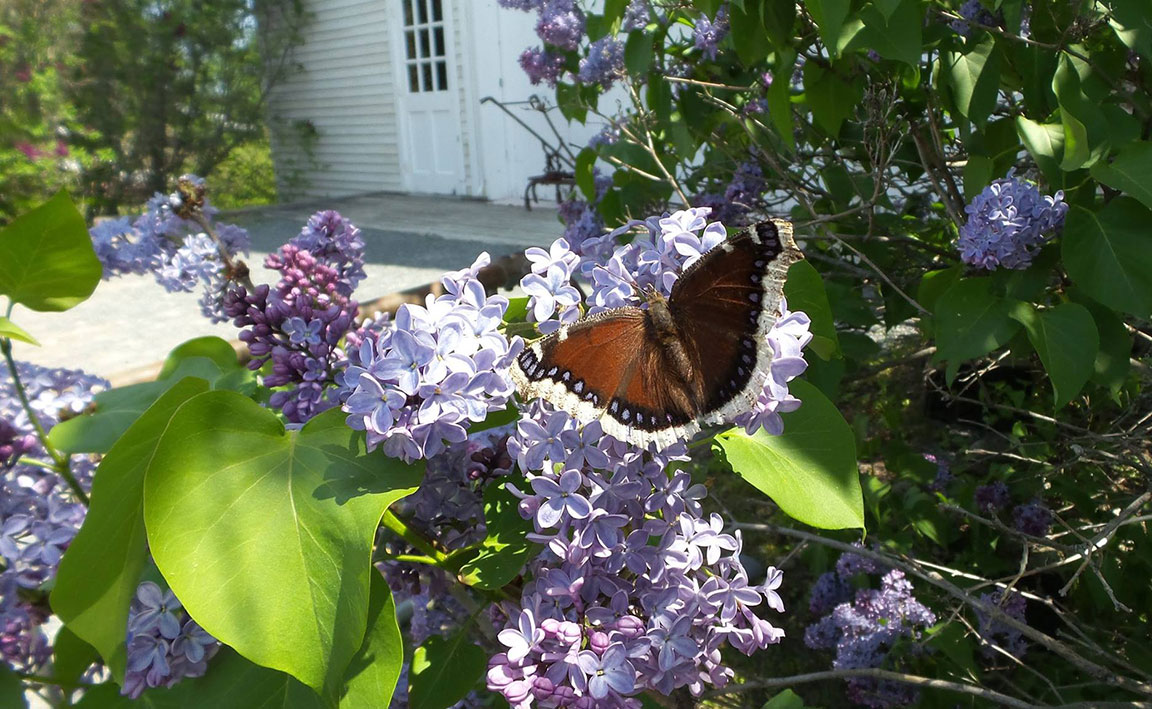
Maine Home Garden News — May 2018
May Is the Month to . . .
By Frank S. Wertheim, Extension Educator, UMaine Extension York County
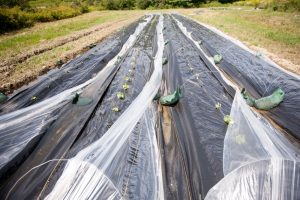 Get your cold-season transplants (vegetables and herbs that tolerate frost and do well in cold weather) into the garden, such as lettuce, spinach, parsley, onions and cabbage family crops (broccoli, kale, radish, mustard greens).
Get your cold-season transplants (vegetables and herbs that tolerate frost and do well in cold weather) into the garden, such as lettuce, spinach, parsley, onions and cabbage family crops (broccoli, kale, radish, mustard greens).- Sow seeds of cool-season vegetables such as beets, carrots, peas, and Swiss chard directly into the garden.
- Start warm-season transplants (vegetables and herbs that won’t tolerate frost and grow best in warmer temperatures such as tomatoes, peppers, basil, cucumbers) indoors and plan to transplant them after all danger of frost has passed. Typically for Maine this would be late May/early June.
- Have your lawn mower tuned up and the blade sharpened. Consider purchasing a battery-powered mower to reduce energy use and carbon emissions. They are also a lot quieter and, therefore, more pleasant to run.
- Reduce your lawn fertilizer and pesticide use with a Low Input Healthy Lawn.
- Prune spring flowering trees and shrubs such as lilac, magnolia, flowering crabapple, and spirea after they flower. For more information, see Pruning Woody Ornamental Plants.
- Tick season is upon us! Be sure and do body checks after coming in from the outdoors. For more information, see Ticks in Maine and Their Identification.
- Put wire hoops with row covers over vegetable crops such as broccoli, cucumbers, and melons for higher production and protection from insect pests. For fruit producing vegetables such as cucumbers, remove the row cover while the plant is flowering to allow for insect pollination.
- Get ahead of weeds as they sprout. It is a lot easier to remove weeds when they are small through shallow cultivation with tools such as a stirrup hoe or collinear hoe, which are designed to till shallow just below the soil surface. Hoeing deeply with a traditional hoe will look nice initially, but will bring more weed seeds to the surface. Cultivating shallow and more often is a much more effective weeding technique.
- Consider installing drip irrigation in your vegetable and flower gardens to save water and reduce plant diseases by avoiding wetting the foliage. Here’s a great reminder of the importance of water in our landscapes.
- Submit your insect pests and disease specimens to your local county office of UMaine Cooperative Extension. Proper identification is key to implementing the proper and most effective control measures.
Invasive Blooms that Belie their Nasty Tendencies
By Tori Lee Jackson, Extension Educator, UMaine Extension Androscoggin and Sagadahoc Counties
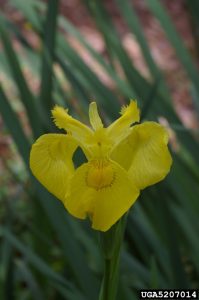
Most avid gardeners know about invasive plants like Burning Bush (Euonymus alatus), Japanese Knotweed (Fallopia japonica), and Purple Loosestrife (Lythrum salicaria), but there are others that don’t make headlines (yet!) that you should be aware of and actively remove from your landscapes, despite their lovely appearance.
One such example is Yellow Iris (Iris pseudacorus). Yellow Iris is the only completely yellow iris on the North American continent and is very striking in the marshes and wetlands it prefers to grow in. Unfortunately, this beauty comes at a steep price as Yellow Iris will completely take over a wetland area, displacing native species and impacting all of the organisms in the ecosystem. Yellow Iris can reproduce both by seed and rhizome which can remain viable for up to 10 years. It cannot be grazed as it contains toxic compounds called glycosides and gloves should be worn when removing it to avoid dermatitis. Be sure to put all plant parts in the garbage — not the compost pile. Yellow Iris is quickly becoming one of the most worrisome invasive species in Maine as it spreads quickly and is extremely difficult to eradicate. If you suspect you may have this plant in your landscape, start working on control now.
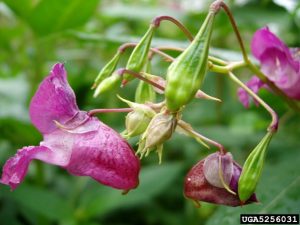
Another wetland species, Ornamental Jewelweed or Himilayan balsam (Impatiens glandulife), may start out looking like our native jewelweed, a.k.a. touch-me-not (Impatiens capensis), but instead of the orange spotted flowers that are so ubiquitous in summer, this invasive has showy, pink blossoms. While it may be tempting to keep this “wild” color in wet areas that can be tough to manage, don’t let its exotic charms fool you. These flowers may draw bees and other pollinators away from native plants and it also can reproduce by seed as well as vegetatively. You should mow this before it flowers and pull out by hand. Be sure to bag all plant parts as this species can sprout new roots or shoots from the stem even after it’s been pulled!
Black Swallowwort (Cynanchum louiseae) may also be found in wet soils, but this vine can tolerate a wide variety of conditions and is as likely to be found growing up the side of an old barn as on the side of the road.
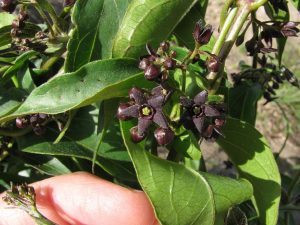
The flowers of this plant are a velvety, blackish-purple — the kind of color you may find in a hybrid petunia — and may be found throughout the entire growing season in Maine. Another surefire way to identify this plant is to give it a sniff — the small, star-shaped blooms have a distinctive, rotting flesh aroma to attract the flies that pollinate it. This vine is in the milkweed family, but leaves and roots are toxic even to Monarch butterfly larvae. The roots are allelopathic, using below-ground chemical warfare to reduce competition by modifying soil conditions so that native plants can no longer grow near them.
This vine will grow up trees as well as buildings or abandoned cars. Infestations this size are very difficult to deal with.
For more information and images of invasive plants in Maine, visit the Maine Natural Areas Program website. You can find further information about the species discussed here, as well as many others, including botanical descriptions, control methods, and contact information for reporting an infestation.
Kids Can Grow: Twenty Years of Youth Gardening and Still Growing…
By Frank S. Wertheim, Extension Educator, UMaine Extension York County
The Kids Can Grow (KCG) 4-H Youth Gardening program began in York County in 1999 and is now in its 20th year, introducing children ages 7-12 to a love of gardening. When developing KCG, I thought back to my school gardens experience with the US Peace Corps in Southern Chile from 1980-82 where I developed what I then called “the individual plot technique,” as a means of providing the children the opportunity to grow their own fresh vegetables in a small section of the school garden. The kids were each assigned their own 1-square-meter plot in the garden where they could choose what they grew and were responsible for their own small garden space. I saw a spark lit with the children’s sense of “I did it” accomplishment and corresponding boost in their self-esteem. I wanted to carry that spark forward with KCG.
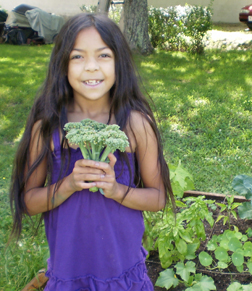
In KCG, children learn to produce their own fresh vegetables, herbs, and flowers along with the basics of good nutrition and food safety. The kids participate in a series of “hands on” classes at a garden teaching site, and then repeat what they learn in their own 3’ x 5’ raised bed gardens at home, using materials supplied them by the program. A Master Gardener Volunteer mentor follows up with the kids and their family at the home garden site to provide support and help them overcome any problems they may encounter. We use raised bed gardens and provide topsoil, compost, and other soil amendments in order that the children are “set up for success” with good soil to start with. We wanted to avoid situations where the families might have to turn over sod and where they may end up with inadequate soil and high weed pressures.
To teach the children that they can grow a lot of food in a small space and to serve as a garden planning tool, we adapted Mel Bartholomew’s square foot gardening method. Having each child develop their own garden plan also facilitates our ability to make sure we supply the correct seeds and transplants for each child’s customized home garden. The garden beds are marked in 1-foot intervals using pushpins and string to create 15 one foot squares. The kids select what they want to grow and plan out their own garden using a square foot garden chart which indicates, for example, that you can grow 16 carrots, 9 spinach, 4 lettuce, or 1 broccoli plant per 1 square foot. In addition, all the produce grown at the teaching garden site is donated to a local food pantry via the Maine Harvest for Hunger program to engage the children in giving back to their communities.
Over the years, Kids Can Grow has continued in York County and the model has been adapted at various locations in Maine and New Hampshire. We estimate more than 1000 children have gone through the program and some of our documented accomplishments include:
- 98% of KCG participants maintained their garden through the season.
- More than 90% experienced a healthy adult/child mentor relationship.
- 82% continued to use their home raised bed gardens in subsequent years.
A few anecdotal comments:
- “You don’t have to buy all of your food, you can grow some of it, you know.” — youth participant
- “You guys are like rock stars!” — Bangor Housing Authority Director, Mike Myatt remarking on how excited the youth and family members were about our weekly garden activities
- “This is the best thing I’ve ever tasted.” — youth trying homemade spinach asiago bread
- “I’m going to be a farmer when I grow up!” — youth participant
- “He is now fascinated by his peas, which he eats voraciously.” — parent
For more information on Kids Can Grow, please contact Frank Wertheim at frank.wertheim@maine.edu or reach him at the UMaine Extension York County office 207.324.2814.
Planting for Fall — How Late Can You Plant?
By Caragh B. Fitzgerald, Extension Educator, UMaine Extension Kennebec County
 Now that the snowy, icy, cold winter is finally giving way to spring, most of us are thinking about planting our spring vegetable gardens. Some may plant early, others may wait for the unofficial Weekend of Gardening, a.k.a. Memorial Day weekend. Some have a plan and are ready to go. Some are wondering how to reconcile the winter’s planning and seed ordering optimism with the time and space realities that are being revealed in April and May. Still others have life situations or plans that may not allow a standard planting time. Succession planting (planting smaller quantities at bi-weekly or monthly intervals) and mid-summer plantings can be key components to help address those time and space constraints. Many cool-season crops thrive in the fall as well as in the spring, and that later planting can help even out your production, processing, and eating workload.
Now that the snowy, icy, cold winter is finally giving way to spring, most of us are thinking about planting our spring vegetable gardens. Some may plant early, others may wait for the unofficial Weekend of Gardening, a.k.a. Memorial Day weekend. Some have a plan and are ready to go. Some are wondering how to reconcile the winter’s planning and seed ordering optimism with the time and space realities that are being revealed in April and May. Still others have life situations or plans that may not allow a standard planting time. Succession planting (planting smaller quantities at bi-weekly or monthly intervals) and mid-summer plantings can be key components to help address those time and space constraints. Many cool-season crops thrive in the fall as well as in the spring, and that later planting can help even out your production, processing, and eating workload.
How late can you plant? Not as late as you might think! In particular, if you hope to do a later planting of cabbage, broccoli, or cauliflower, you need to start planning now. In central Kennebec County, those would be planted outside in mid-June, but you would need to start growing the transplants in mid-May. Since retailers don’t typically produce transplants for that later date, you will most likely have to start your own seedlings. But you’ll be glad you did — cauliflower in particular seems to perform better with this later planting date, according to UMaine Extension Vegetable Specialist Mark Hutton.
It takes longer to grow the same crop when it’s planted in summer compared to in spring. The days are shorter, the sunlight is less intense, and the late-season weather is cooler. While there are no hard and fast rules about how late you can plant, you can come up with a good estimate. Let’s take an example of a family that’s traveling over summer vacation, returning home in the middle of August. Can they still plant and harvest a garden that focuses on short-season crops? The University of Nebraska, Lincoln, has an article called “Fall Gardening (PDF)” that walks us through the calculations. They consider the following factors: days to maturity, fall factor, frost tender factor, and average harvest period.
As with all vegetable gardening, one key date is the anticipated first fall frost. For my part of Kennebec County, that typically occurs in early October, so let’s say October 1. For fall harvest, it’s recommended to add a “fall factor” of 14 days to the days to maturity for the crop. This helps account for the shorter days and cooler temperatures. Mokum carrots are listed as 54 days to maturity. 54 + 14 fall factor = 68 days. It’s also suggested to add a frost-tender factor as extra insurance for frost-tender plants. That’s a buffer of 0 – 14 days, depending on how frost-tender your crop is. Carrots can withstand a light frost, so we’ll leave that out. 54 + 14 + 0 = 68 days. We’ll harvest the crop all at once, so we don’t need to add time for multiple harvest periods, either. 54 + 14 + 0 + 0 = 68 days. Back up 68 days from the anticipated first frost, and we get August 21. Yes, the family can probably enjoy their own carrots when planted after they return from vacation.
Beans would be another story, though. Provider green beans are 50 days to harvest. Add in the fall factor for 50 + 14 = 64 days. And beans are very frost tender, so let’s add that additional 14 day insurance: 50 + 14 + 14 = 78 days. Calculate 78 days before that first frost, and now we get August 11. Yikes, the family won’t be home yet! That’s an estimate for a single harvest, too. Usually we hope for more than one picking of green beans. If that were the case, we’d need to add even more time. No home-grown beans this year.
Another tool I find very helpful is Jean English’s article “Huge Growth Potential, Pounds of Dividends: It’s Time to Order Seeds,” which was originally published by the Maine Organic Farmers and Gardeners Association in 2009. It includes a list of what you can plant on different dates from March through October. This list is appropriate for the mid-coast area and central Maine. From this list and from the calculations above, you can see that short-season, frost tolerant crops are the ones that can be planted latest in the season. Many of the short-season crops will do well planted through mid-July in my area, but beets do better no later than early August. Lettuces, radish, spinach, and turnips can be planted in August. By September, lettuce, radish, and spinach are the safe bets.
So maybe you’re trying to reduce the size of your garden and plant a second crop after the early greens or garlic are done. Or maybe your schedule won’t allow for much garden time this spring, but it frees up in summer. Whatever the reason, consider using these later plantings as yet another way to extend your garden season. Just don’t forget to start your favorite cauliflower seedlings soon!
Additional resources on succession planting and garden planning:
- planting chart for the home vegetable garden
- planting vegetables in midsummer for fall harvest
- succession planting interval chart for vegetables (no endorsement intended)
- succession planting calculator (no endorsement intended)
Food & Nutrition: Let’s Preserve
By Kathleen Savoie, Associate Extension Professor, University of Maine Cooperative Extension Cumberland County
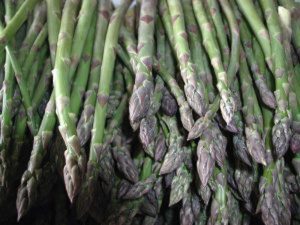 Asparagus, ramps, parsnips, radishes, and pea pods are some of the first spring vegetables to appear and what better way to take advantage of these harbingers of spring than to make quick refrigerator pickles!
Asparagus, ramps, parsnips, radishes, and pea pods are some of the first spring vegetables to appear and what better way to take advantage of these harbingers of spring than to make quick refrigerator pickles!
Step 1. Prepare Vegetables
Wash and chop vegetables into the desired shape you would like for pickles. These tender spring vegetables do not require any cooking prior to pickling.
Step 2. Select Flavorings
Get creative with fresh or dry flavorings. Mix and match from the following suggested list of fresh and dried herbs and spices to add up to 2 tablespoons per jar.
Dry:
- Bay leaves
- Celery seed
- Chile peppers
- Cumin seed
- Dill seed
- Mustard seed
- Pickling spice
- Peppercorns
- Tumeric
Fresh:
- Jalapeno or Habanero pepper
- Dill
- Garlic
- Oregano
- Shallot
- Horseradish
Step 3. Pack Vegetables
Pack prepared vegetables snugly into washed pint-sized canning jars or similar sized glass or heatproof plastic containers with lids.
Step 4. Make Brine
Make either sweet or sour brine using the following recipes:
Sour Brine:
- 3 cups white vinegar (or apple cider)
- 3 cups water
- 3 Tbsp. canning/pickling salt
- 2 Tbsp. sugar
Sweet Brine:
- 3 cups white vinegar (or apple cider)
- 3 cups water
- 3 Tbsp. canning/pickling salt
- 1 1/2 cups sugar
Bring brine to a boil and let boil for 2 minutes. Remove from heat.
Step 5. Fill Jars with Brine
Carefully fill the jars with brine to within 1/2 inch of the top of the rim. Place the lids on the jars and refrigerate. Allow flavor to develop for 1 – 2 days before serving. Use within 2 weeks. Also see Bulletin #4044, Let’s Preserve Pickles.
No Ticks 4 ME
Courtesy of the Maine Center for Disease Control and Prevention
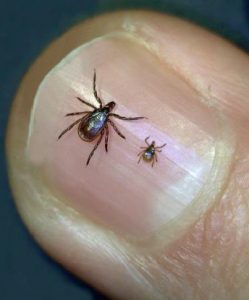
The warmer weather is on its way, which means that we need to be using proper protection methods against ticks and the diseases they may carry. Maine had 1,769 cases of Lyme disease reported in 2017 (preliminary data as of 1/16/18). May is Lyme Disease Awareness Month each year in Maine, which is the perfect time to remind you to use “No Ticks 4 ME” when spending time outdoors since ticks are most active in warmer weather.
Lyme disease is treatable and most individuals recover completely with proper drugs. However, the easiest way to avoid disease is prevention, using “No Ticks 4 ME”:
- Use caution in tick infested areas by staying in the center of paths.
- Wear protective clothing such as long sleeves and light colors to be better able to see the tick.
- Use an EPA approved repellant such as: deet, picaridin, IR3535, and oil of lemon eucalyptus.
- Perform daily tick checks after any outdoor activity. Taking a shower after being near a tick habitat is a good way to wash off any unattached ticks and provides good opportunity to do a tick check.
Lyme disease is a bacterial infection that is passed through the bite of an infected deer tick. It is most common in adults over the age of 65 years and in children between the ages of 5 and 15 years in Maine. Individuals who work and play outside are more likely to be exposed to ticks. Ticks must be attached for 24-48 hours before Lyme disease can be transmitted, so daily tick checks will allow you to find and remove ticks before getting Lyme disease.
If you are bitten by a tick, or spend a lot of time outdoors, make sure to be aware symptoms for up to 30 days after exposure. Also be sure to call your healthcare provider if symptoms develop. The most common symptom of Lyme disease is a skin lesion called erythema migrans (EM), better known as the “bull’s-eye” rash. This usually appears 3-30 days after the tick bite. Other symptoms include fever, headache, and joint or muscle pain.
Lyme disease is not the only disease that can be carried by deer ticks in Maine. Anaplasmosis, babesiosis, and Powassan are three other tickborne infections found in Maine. The number of human anaplasmosis cases rose to 662, the number of human babesiosis cases rose to 117 and, the number of human Powassan cases increased to 3 in 2017 (preliminary data as of 1/16/18).
While the deer tick is the only species of tick in Maine that can transmit Lyme disease, there are a number of other species of ticks found across the state. Tick identification is important, especially when removing ticks, and there are tick identification resources available to order at the Maine CDC website. The University of Maine Cooperative Extension Tick ID Lab also offers free identification services and educational references.
Additional information:
- Maine CDC has Lyme disease information available on our website at http://www.maine.gov/lyme.
- Lyme disease data is available through the Maine Tracking Network at http://www.maine.gov/lyme under EPI Information on the left hand side of the page.
- University of Maine Cooperative Extension Tick ID Lab submission instructions can be found at http://extension.umaine.edu/ipm/tickid/.
- For additional questions, please call Maine CDC at 1.800.821.5821 or email disease.reporting@maine.gov.
- Tickborne videos can be found at www.maine.gov/lyme, on the left hand side of the page.
University of Maine Cooperative Extension’s Maine Home Garden News is designed to equip home gardeners with practical, timely information.
Let us know if you would like to be notified when new issues are posted. To receive e-mail notifications fill out our online form.
For more information or questions, contact Kate Garland at katherine.garland@maine.edu or 1.800.287.1485 (in Maine).
Visit our Archives to see past issues.
Maine Home Garden News was created in response to a continued increase in requests for information on gardening and includes timely and seasonal tips, as well as research-based articles on all aspects of gardening. Articles are written by UMaine Extension specialists, educators, and horticulture professionals, as well as Master Gardener Volunteers from around Maine, with Katherine Garland, UMaine Extension Horticulturalist in Penobscot County, serving as editor.
Information in this publication is provided purely for educational purposes. No responsibility is assumed for any problems associated with the use of products or services mentioned. No endorsement of products or companies is intended, nor is criticism of unnamed products or companies implied.
© 2018
Call 800.287.0274 (in Maine), or 207.581.3188, for information on publications and program offerings from University of Maine Cooperative Extension, or visit extension.umaine.edu.
